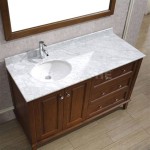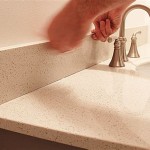Replacing Pipes In Bathroom Sink: A Comprehensive Guide
Dealing with plumbing issues can be daunting, especially when it involves replacing pipes in your bathroom sink. However, with the right knowledge and preparation, you can tackle this task yourself and save some money in the process. Here's a comprehensive guide to help you through the process smoothly.
Tools and Materials You'll Need
Before you start, gather the necessary tools and materials:
- Adjustable wrench
- Pliers
- Basin wrench
- New pipes (copper, PEX, or CPVC)
- Pipe cutter
- Teflon tape
- Pipe dope
- Bucket
- Rags
Safety Precautions
Safety should always be your top priority when working with plumbing:
- Turn off the water supply at the main valve before starting any work.
- Open the sink faucet to drain any remaining water.
- Wear gloves to protect your hands from sharp edges.
Step-by-Step Guide
Follow these steps to replace the pipes in your bathroom sink:
1. Disconnect the Old Pipes
Use an adjustable wrench to loosen the nuts connecting the old pipes to the sink and water supply valves. Be careful not to overtighten.
2. Cut the Old Pipes
Measure and mark the new pipes to the desired length. Use a pipe cutter to cut the old pipes at the marks.
3. Prepare the New Pipes
Apply Teflon tape clockwise around the threads of the new pipes. Then, apply pipe dope to the male threads.
4. Install the New Pipes
Screw the new pipes into the water supply valves and sink by hand. Use the basin wrench to tighten the connections firmly but avoid overtightening.
5. Turn on the Water Supply
Slowly turn on the water supply at the main valve. Check for any leaks around the connections.
6. Check for Leaks
Open the sink faucet and let water flow for a few minutes. Inspect all the connections thoroughly for any leaks.
Tips for a Successful Replacement
Here are some tips to ensure a successful pipe replacement:
- Use high-quality pipes and materials.
- Cut the pipes cleanly and accurately.
- Apply Teflon tape and pipe dope properly.
- Tighten the connections firmly but avoid overtightening.
- Test the water supply thoroughly for leaks.
Conclusion
Replacing pipes in a bathroom sink can be a simple task if you follow the steps carefully and take proper safety precautions. By gathering the right tools and materials, preparing the pipes properly, and following the instructions outlined in this guide, you can save money and ensure your bathroom sink functions smoothly for years to come.

How To Fit A Bathroom Sink Diy Guides Victorian Plumbing

How To Install A Pipe From Sink Drain Wall Ehow

Bianchina Swapping Out A Bathroom Sink Drain And Pop Up

How To Change J Pipe Under A Bathroom Sink Ehow

Bathroom Sink Drain Leaking Around Threads Premier Plumbing Inc

Bathroom Sink Plumbing Installation Diy Montreal

How To Replace A Sink Stopper Quick And Simple Home Repair

Bathroom Sink Plumbing Installation Diy Montreal

What Is The Bathroom Sink Plumbing Rough In Heights
How To Install Bathroom Sink Drain Queen Bee Of Honey Dos
Related Posts







